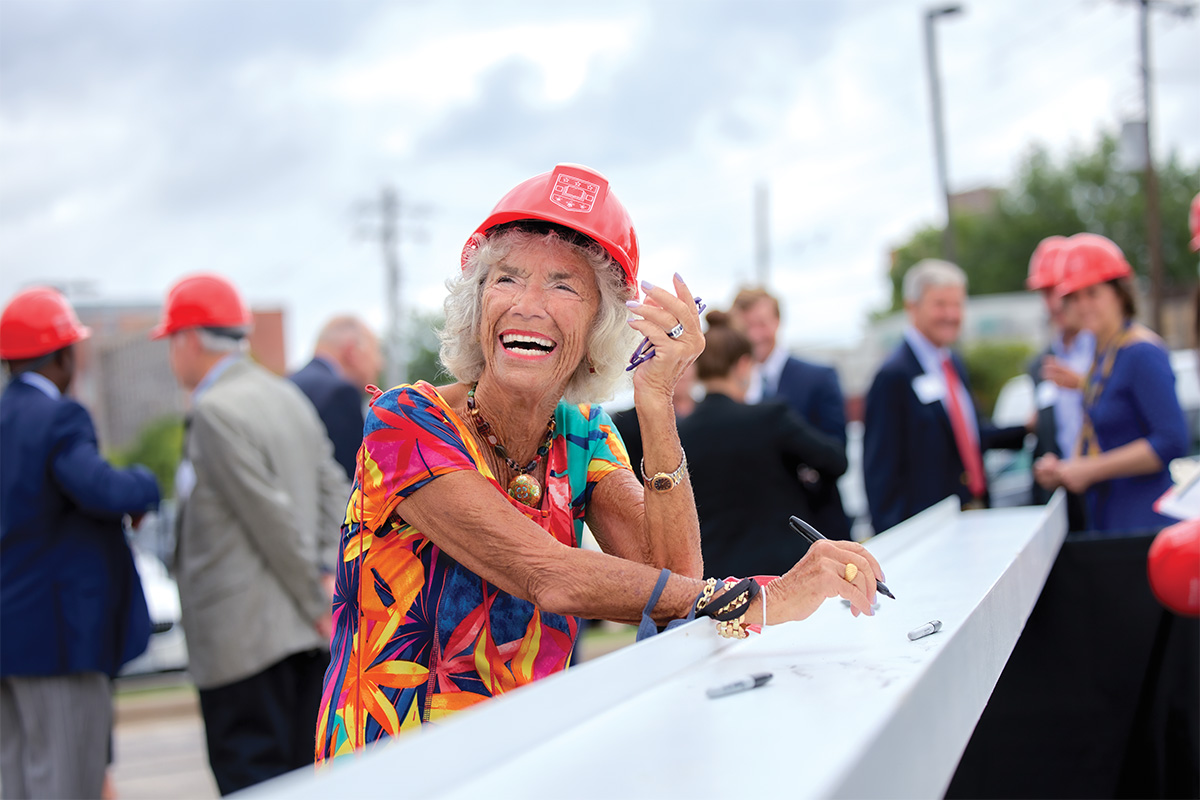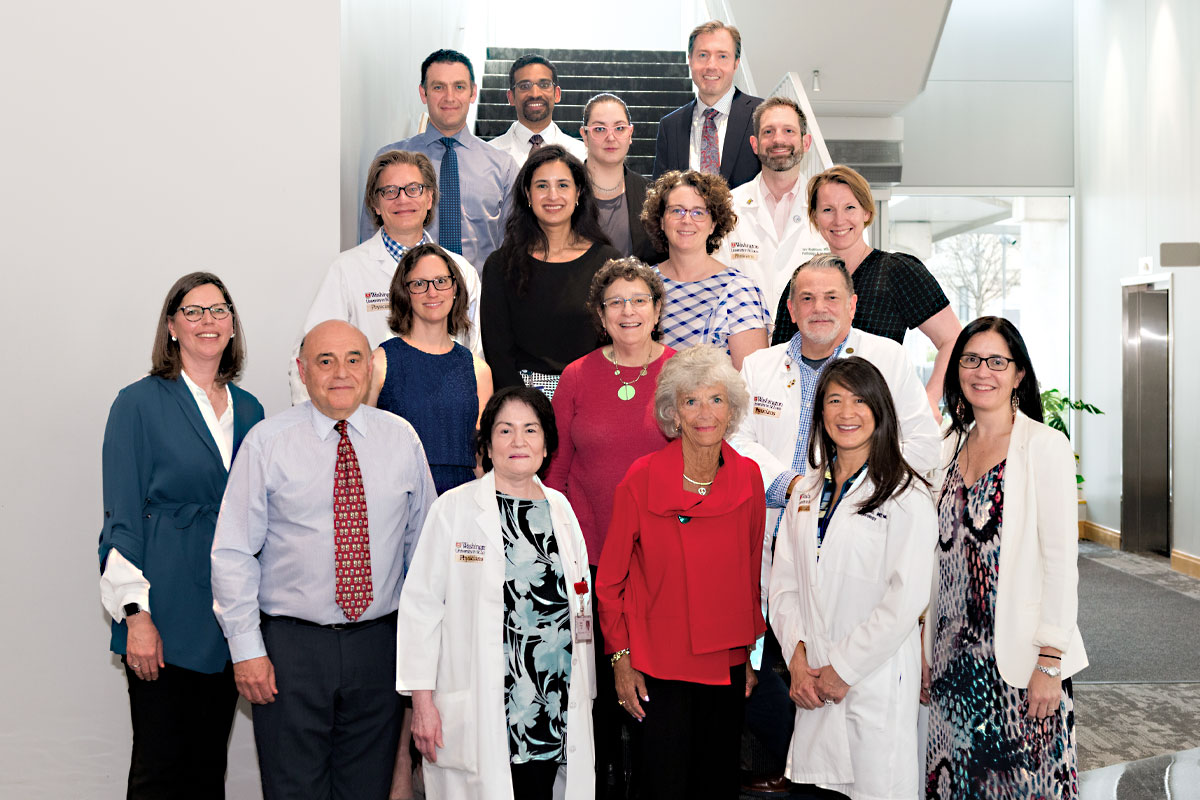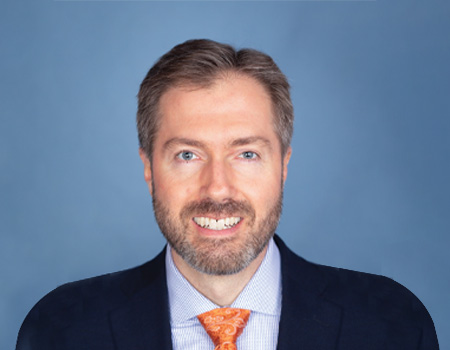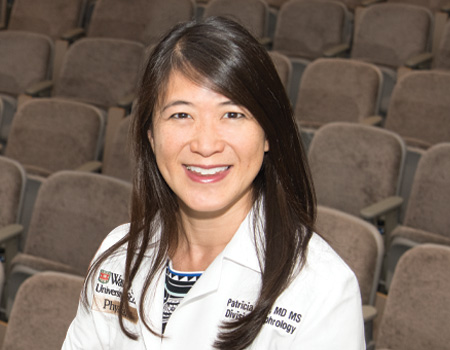
In 2004, Carol B. Loeb and her late husband, Jerome T. Loeb, made a gift establishing a unique fellowship program that would provide School of Medicine faculty with protected time and funding to pilot innovative approaches to training future physicians. Eighteen years later, 29 faculty members have been named Carol B. and Jerome T. Loeb Teaching Fellows, and the program has become an idea generator and incubator, professional springboard, vibrant community and much more.
Education is a longstanding passion for the Loeb family. Carol has devoted nearly 60 years to secondary education in St. Louis. For decades, she taught middle school and high school mathematics and now prepares students for college entrance exams. After retiring as board chairman of the May Department Stores Co. in 2001, Jerome Loeb served as an adjunct professor of marketing at Olin Business School until his death several years later.
Rooted in their shared values, the gift was a way to “honor the incredible clinicians who played such important roles throughout our lives,” Carol Loeb said.
“To see the program’s evolution and how it has changed lives is much more than I ever dreamed possible.”
Carol B. Loeb
Awards such as the two-year Loeb Teaching Fellowships remain all too rare in American academic medicine, according to Eva Aagaard, MD, senior associate dean for medical education. “This program sets the medical school apart as an institution that truly supports educator career development,” said Aagaard, who also is the Carol B. and Jerome T. Loeb Professor of Medical Education.
Fellowship recipients come from a diverse range of specialties and professional experiences, but they share a deep commitment to teaching and a desire to push medical education — and the next generation of clinicians — forward.

The wide-ranging impact of their work was on full display in April at a symposium celebrating the program. Former fellows gathered to share their stories and gratitude.
Loeb, who was in attendance, was moved by their words. “I hoped the fellowships would make a difference to the medical school and its students and residents,” she said. “But to see the program’s evolution and how it has changed lives is much more than I ever dreamed possible.”
Impact of the fellowship recipients
Simulated learning builds real expertise
Observation is key to medical education, yet watching a doctor or a nurse intubate someone is different than performing the procedure yourself. Today, medical students and trainees routinely practice these and other foundational skills in simulated environments, with uncannily realistic mannequins standing in for flesh-and-blood patients. Medical simulation, however, was still a relatively nascent pedagogical tool in the early years of the millennium.

In 2003, Mary E. Klingensmith, MD, then an assistant professor of surgery, was asked to co-lead a task force examining the state of immersive learning at the medical school. “It was clear there was a tremendous opportunity to integrate simulation and immersive education into teaching at the undergraduate and graduate levels, across multiple disciplines and departments,” said Klingensmith, now the Mary Culver Distinguished Professor Emeritus.
Klingensmith seized the opportunity to apply for a Loeb Teaching Fellowship. As one of the program’s inaugural fellows, she conducted a formal needs assessment of simulation-aided learning at the school. She also participated in an immersive education course at Harvard Medical School and met with medical educators from around the country.
“I spent two years really understanding the landscape, both outside WashU and, chiefly, inside WashU,” she said. With her fellowship concluding in 2007, Klingensmith applied for a second round of funding. Her goal was to develop and implement a simulation curriculum for School of Medicine students, residents and fellows.
The Howard and Joyce Wood Simulation Center, which opened on the fifth floor of the Farrell Learning and Teaching Center in December 2008, is one result of this work. Nearly 15 years since its launch, the thriving center facilitates 300-plus teaching sessions with more than 500 learners annually.
Beyond the medical students and trainees who have benefited from her project, Klingensmith sees her own professional path as a testament to the fellowship program’s impact. While a fellow, she honed valuable communication, collaboration and leadership skills. Klingensmith recalls justifying budgetary requests to the dean and coordinating with advancement staff and potential donors on funding issues. “Those experiences were really important to my growth in academic medicine,” she said.
Klingensmith credits the fellowship with ably preparing her for her post as senior vice president for accreditation at the Accreditation Council for Graduate Medical Education. “It’s phenomenal to be able to take the gifts I cultivated at WashU to an even bigger platform,” she said. “The fellowship truly transformed my career.”
Self-reflection as strategy
When he was the director of medical student education for the Division of Pediatric and Developmental Neurology, Douglas P. Larsen, MD, began to think critically about how students learn to become doctors. For Larsen, patient interactions rank among the “greatest powers in medical education,” and he sought to develop a system that would optimize experiential learning.

In 2010, Larsen designed a yearlong pilot program for students in the pediatric neurology portion of the neurology clerkship. The students set personal goals and wrote journal entries about what they learned via patient interactions each day. At the end of every week, they submitted their entries to Larsen for feedback.
In a post-pilot survey, 85% of student respondents indicated that the daily reflections improved their learning. Encouraged by this positive response, Larsen applied for a Loeb Teaching Fellowship to expand the program to the entire neurology clerkship, which numbers about 120 third-year medical students annually. The larger rollout brought additional student feedback. And with fellowship support, Larsen refined the protocols even further, diving into intensive research on experiential learning.
“We found that students gained the most value in prospective planning versus retrospective journaling,” said Larsen, now a professor of neurology and of pediatrics. “We hadn’t fully teased that out in the pilot. So, we shifted from reflection and journaling to goals and collaboration. Learning truly took place when faculty members and residents collaborated with students to accomplish their goals.”
Fostering these interactions became a curriculum priority. Medical students shared their specific learning goals each week and partnered with mentors to devise action plans. Today, active coaching and feedback between program leadership and students remain key components in the neurology clerkship.
Larsen’s experience as a Loeb Teaching Fellow laid the groundwork for additional support from the Josiah Macy Jr. Foundation, which helped broaden the program to other medical school departments. The fellowship also equipped him to participate in the development of the school’s Gateway Curriculum — a process that involved more than a few former Loeb Teaching Fellows.
“The fellowship was the beginning of a transformative journey for me,” Larsen said. “I moved from focusing on learning as cognition to recognizing that learning occurs in our interactions and in our systems.”
Training physicians as educators
In 2016, Patricia F. Kao, MD, associate professor of medicine, began developing a program to help residents gain the knowledge and skills necessary to succeed as clinician-educators. Kao’s work led to the formation of the Washington University Teaching Physician Pathway (WUTPP), a one- to two-year certificate program that she now directs.

WUTPP features a series of intensive two-week didactic blocks that includes lectures and workshops on topics such as educational theory and curriculum development. WUTPP also provides participants with dedicated opportunities to teach medical students and engage in mentored education scholarship.
The program welcomed an inaugural class of seven internal medicine residents in 2017. That same year, Kao commenced a two-year Loeb Teaching Fellowship that would take WUTPP to new heights. With the fellowship funding, Kao was able to extend the program’s reach beyond internal medicine. In 2019, WUTPP opened up to residents in dermatology, general surgery, pediatrics and obstetrics and gynecology. A separate track for pediatric and medicine fellows launched in 2021.
One of the most significant developments to come from Kao’s Loeb fellowship is the addition of a mentoring component in 2018. The program pairs residents with faculty mentors to create and teach didactic sessions to third-year medical students. “I was looking for opportunities for residents to gain workplace-based experience with curriculum design and presentation skills, while also contributing to the school’s mission,” Kao explained. “It seemed like the perfect way to combine faculty goals to modernize their curricula and mentor teaching residents, and for residents to develop their skills as clinician-educators.”
WUTPP enrollees have presented their education scholarship nationally for organizations such as the Association of American Medical Colleges and the Alliance for Academic Internal Medicine. Over the past five years, 52 residents and 11 fellows have completed or are currently in the program. To date, WUTPP participants have taught four graduating medical student classes.
For Kao, being a Loeb Teaching Fellow was a career-defining experience. The fellowship gave her critical time and resources to expand WUTPP and connected her to an invaluable support network of former Loeb Teaching Fellows. “I have been able to contribute to the medical school community in an innovative and sustainable way, far in excess of what I could have accomplished alone,” she said. “The fellowship unequivocally changed my career and my life.”
Published in the Autumn 2022 issue





 Share
Share Tweet
Tweet Email
Email